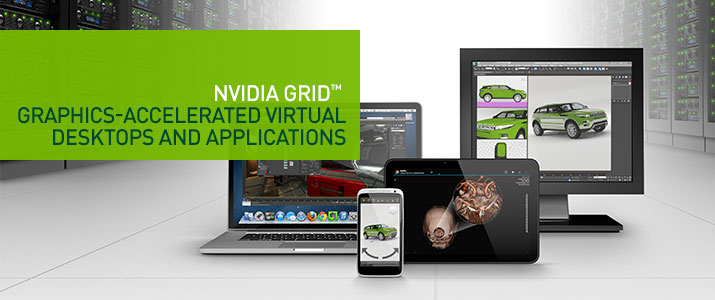The Business Value of NVIDIA GRID vGPU Technology in VDI
For years, high-end and 3D graphics were ignored in the application and desktop virtualization world. They were just too CPU and communication intensive to work effectively in the technology of the day. Well technology marches on. CPUs are getting very powerful, RAM density is going through the roof, and internet/WAN connectivity speeds are out of sight. This is all great for the general application and desktop virtualization world, but what has really made the high-end graphics community take notice is the excellent work that NVIDIA has done with their Graphics Processing Units (GPUs).
So what makes a GPU different from a CPU? The answer is massive concurrency. A normal CPU may have 4, 8, 12 cores or even more, and with hyper-threading, each core can handle 2 tasks simultaneously. In the best case scenario, that might allow 24 simultaneous task execution streams. GPUs, on the other hand, are massively parallel and are designed to process hundreds or even thousands of tasks simultaneously. This is ideal for graphics manipulation, since this type of processing is required for applications of this nature.
OK, so what are the issues and benefits facing the high-end graphics community, and why is this such a big deal for them? Let’s take a look.
- Efficient Access to a global talent base of engineers. The data models created by some of these graphics and modeling applications are HUGE, and in the past, if a company wanted to distribute the design effort to engineers in remote locations, then a copy of the data model had to be transferred to the remote location so that it could be processed locally. Even for very fast communication links, this commonly took hours to accomplish and led to many logistical and inefficiency nightmares. Being able to access the applications remotely via a VDI connection eliminates all of those problems.
- Security of Intellectual Property (IP). Because of the transferring requirement of the data model described above, companies are forced to expose highly secret CAD files to remote engineers for local processing. This significantly increases the risk of piracy. This solution allows centralization and protection of all IP.
- Improves operating efficiency and reduces costs. Again, thinking of that data model transfer issue, companies had to pay for very fast, very long-distance internet or WAN connections if they wanted to even attempt this type of operation. Now, since the data model can always stay secure in the HQ datacenter, this cost can be significantly reduced or eliminated.
- Enables work from home. VDI sessions are run on servers in the data center, and those servers will have the horsepower to run the graphics applications effectively. This allows the remote workstation device to be virtually anything since the vast majority of the application processing is being done by the server housing the VDI session for that users. This means that users can now work from home on their home system very effectively. Not only does this allow flexibility and efficiency for the user, but it also serves as a Business Continuity/ Disaster Recovery solution.
- Access to common users. Since this GPU capability can now be effectively virtualized allowing many users to share a physical GPU in a server, this efficiently allows many non-engineering users to have access to plans, shop drawing, etc. in a high-res mode anywhere and on any device. This is huge.
- Need to Leverage mobile devices. Taking the last point even further, VDI supports virtually any type of user device. Clients are available for iOS and Android, as well as Windows, MAC and Linux, and since effective viewing can be done with a low level of bandwidth, access is now available anywhere and on virtually any kind of device.
This technology was developed at the request of Boeing to aid them in the development of their 787 Dreamliner, which was being done in 4 different engineering centers spread all over the world. They came to Citrix and NVIDIA in 2006 to complete the work, and it has taken this long to develop it and get it right. This should give you an idea of the technical complexity of the challenge, but now we see the results. Now up to 30 XenApp users or 8 XenDesktop VDI users can share a single GPU in a server. This is truly a game changer for engineering, design, and manufacturing firms.









